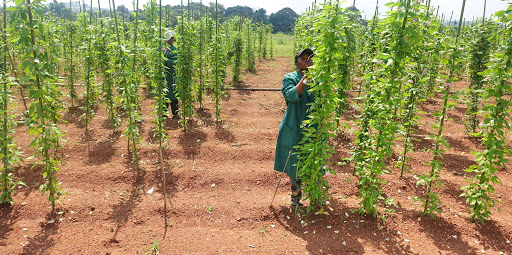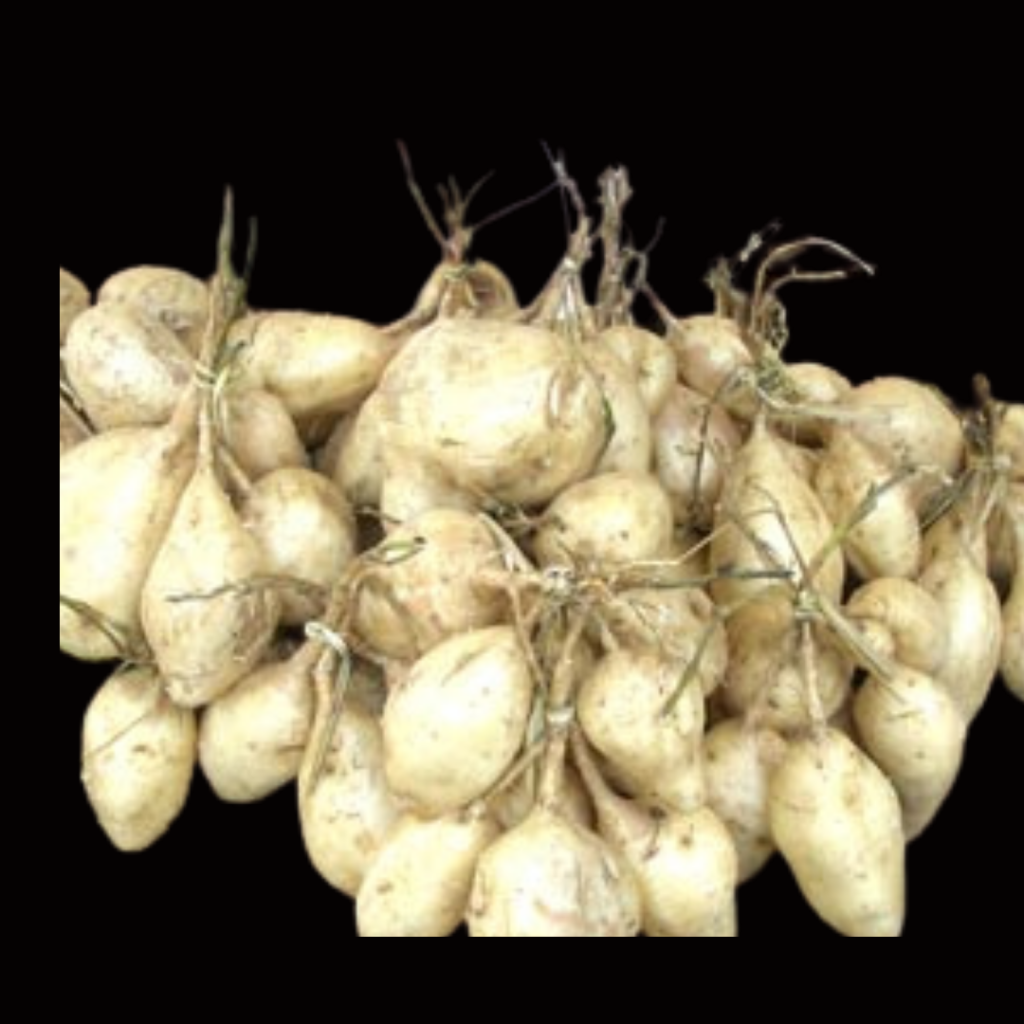African Yam Beans – African indigenous crop

Have you ever heard of the African Yambeans? It is a fascinating crop because it produces beans as well as a tuber. Two for the price of one.
The African Yambean, Sphenostylis stenocarpa, a lesser-known crop, holds a lot of potential for addressing malnutrition in Nigeria and West Africa. The only other crop like it is the Mexican Yambean called the Jicama (Pachyrhizus erosus). Some research show that the leaves of the African yambeans can also be eaten but there isn’t a lot of information about this. However, the seeds and leaves of the Jicama are said to be poisonous and should not be eaten. The African yambean is a unique crop indeed.
The African Yambean is common to the southeastern part of Nigeria where it is called Okpodudu. Amongst the Yoruba, it is called Sese. While the crop is usually grown for its beans in Nigeria, in other parts of Africa like cote d’ ivoire, Ghana, Cameroon, Gabon, DRC, Ethiopia and parts of East Africa, they are also grown for the tuber.
The bean seeds are nutrient-rich and compare favourably well with its leguminous counterpart.
In terms of yield, it produces both beans and tubers in abundance. The crop adapts well and is often described as a security crop. Interestingly, it is one of the most efficient nitrogen-fixing species of the plant kingdom.
Nutrition
The tuber

The tuber of the African yambean contains an appreciable amount of protein; twice that of sweet potato, yam and Irish potato and about 10 times that of cassava. The tubers are said to taste like potatoes and can be eaten fresh, steamed or boiled. The African yam bean is not grown for its tuber in Nigeria but for its seeds unlike other parts of Africa where it is grown.
The beans

As soybean is described as the king of legumes, the African yambean compares well with it in terms of the essential amino acid composition. The protein in the beans is superior to cowpea and pigeon pea and also compares well with Bambara groundnut, chickpeas. It has more sulphur containing Amino acids than soybeans, pigeon pea, and cowpea. The African Yambean contains an appreciable amount of dietary fibre, carbohydrate and minerals such as zinc, iron, magnesium, calcium.
Nutritional Info of Bean seeds Per 100g (soaked, boiled without salt and drained)
| NAME | AMOUNT | UNIT |
| Energy | 137 | kcal |
| Water | 61.5 | g |
| Protein | 9 | g |
| Fat | [0.7] | g |
| Carbohydrate | 20.2 | g |
| Total Dietary Fibre | 7.3 | g |
| Calcium | 15 | mg |
| Iron | 1.5 | mg |
| Magnesium | 69 | mg |
| Phosphorus | 99 | mg |
| Potassium | 419 | mg |
| Sodium | 1 | mg |
| Zinc | 0.78 | mg |
| Copper | 0.29 | mg |
| Beta-Carotene Equivalent | 7 | mcg |
| Vitamin D | 0 | mcg |
| Vitamin E | 0.19 | mg |
| Thiamine | 0.19 | mg |
| Riboflavin | 0.06 | mg |
| Niacin | 0.7 | mg |
| Vitamin B6 | 0.10 | mg |
| Folate | 100 | mcg |
| Vitamin B12 | 0 | mcg |
| Vitamin C | 1 | mg |
The bulk of the carbohydrate is starch and this starch slowly digests which make it great for people with diabetes mellitus. It also has an appreciable amount of non-starch polysaccharides like cellulose that help reduce risk of coronary heart diseases, heart disorders, breast cancer and several other diseases.
Research shows that it is rich in polyphenols and flavonoids which help to reduce damage caused by oxidative stress and are beneficial to the health generally.
The beans complement maize, sorghum and other cereals to form complete proteins. African yam beans have been used to make cookies, snacks, breakfast foods, complementary foods for infants and noodles and it has worked well when combined in certain proportions with other flours and ingredients.
Challenges
- Not many people have heard of it or even tasted it
- Grown by farmers for self-use mostly
- Production/availability is low
- It is a low-status crop (women are sole producers)
- Falls under the category of hard-to-cook crops. It can take hours to cook the beans (but this trait can be worked on)
To address the hard-to-cook phenomenon, soaking and germinating the beans reduces cooking time and antinutrient factors. Germinating the seeds also increase the bioavailability of many minerals in it. However, soaking for too long (24 hours) decreases the calcium, iron and magnesium contents.
In a nutshell
Africa has a winner in this crop if it can harness its potential. Its two edible parts – seed and tuber – and their nutritional contents show that it can contribute to the fight against malnutrition and hunger. It is an indigenous crop which if focused on can improve livelihoods for women farmers and provide more job opportunities. Currently, you cannot find it on the shelves and it may remain so. There is therefore a need for awareness and commercialization of this crop. In the quest to eat better and live better, Africa needs to look within and utilize its many blessings. As always, I encourage you to eat better and live better.
Notes:
George et al 2020. The prospects of African Yam Beans: Past and future importance. Heliyon 6, 2020. https://doi.org/10.1016/j.heliyon.2020.e05458
Ene- Obong 2015. Nutrition science and practice: emerging issues and problems in food consumption, diet quality and health. 35th Inaugural lecture, University of Nigeria Nsuka. https://www.unn.edu.ng/wp-content/uploads/2015/09/35th-Lecture.pdf
National Research Council 2006. Lost Crops of Africa: Volume II: Vegetables. Washington, DC: The National Academies Press. https://doi.org/10.17226/11763



This should be encouraged.